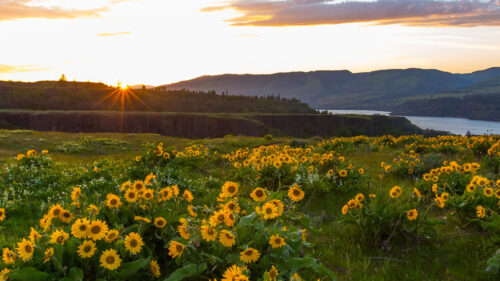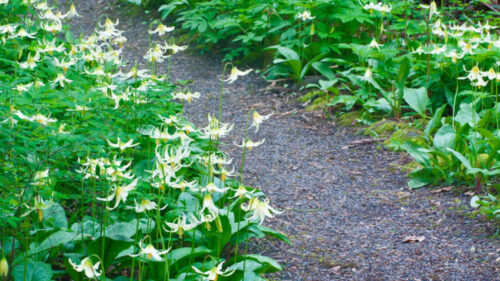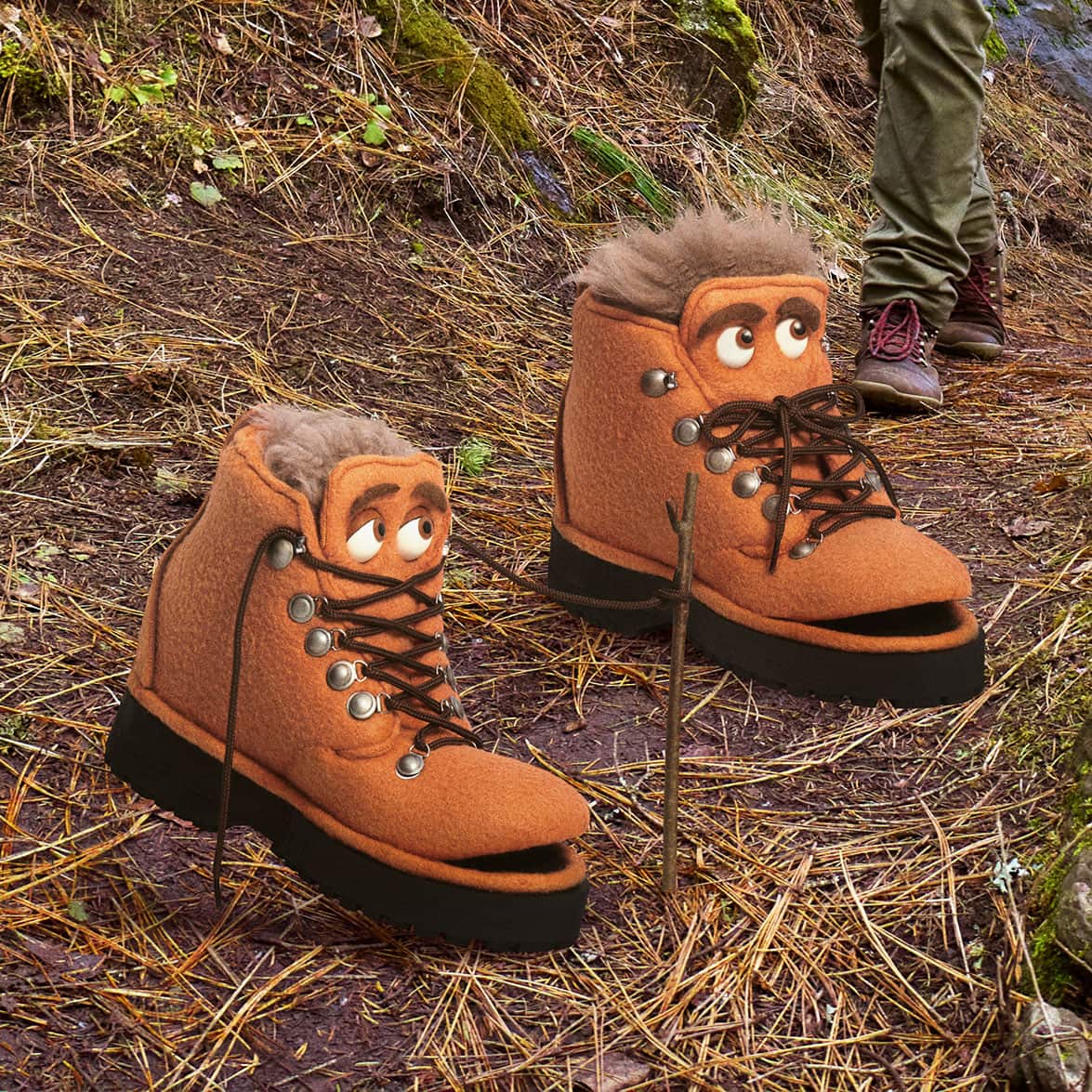Cradled below Southern Oregon’s craggy Klamath-Siskiyou Mountains and the glaciated Cascade volcanoes, the Illinois River Valley’s unique geology and climate make it a hotbed for rare and unusual flora. With its main city Cave Junction located just under five hours south of Portland, at the southern edge of Oregon’s border, it seems a world away. Colorful rocks and quirky plants there survive on scant resources in a starkly beautiful setting, making it the perfect spring road-trip destination for wildflower enthusiasts and anyone looking to get off the beaten path.
Botanists Amanda Snodgrass from the Bureau of Land Management and Adam Corcoran from the United States Forest Service live and work in the area. Here they share their recommendations on where to go to see wildflowers in the valley, enjoy spring hikes and more.
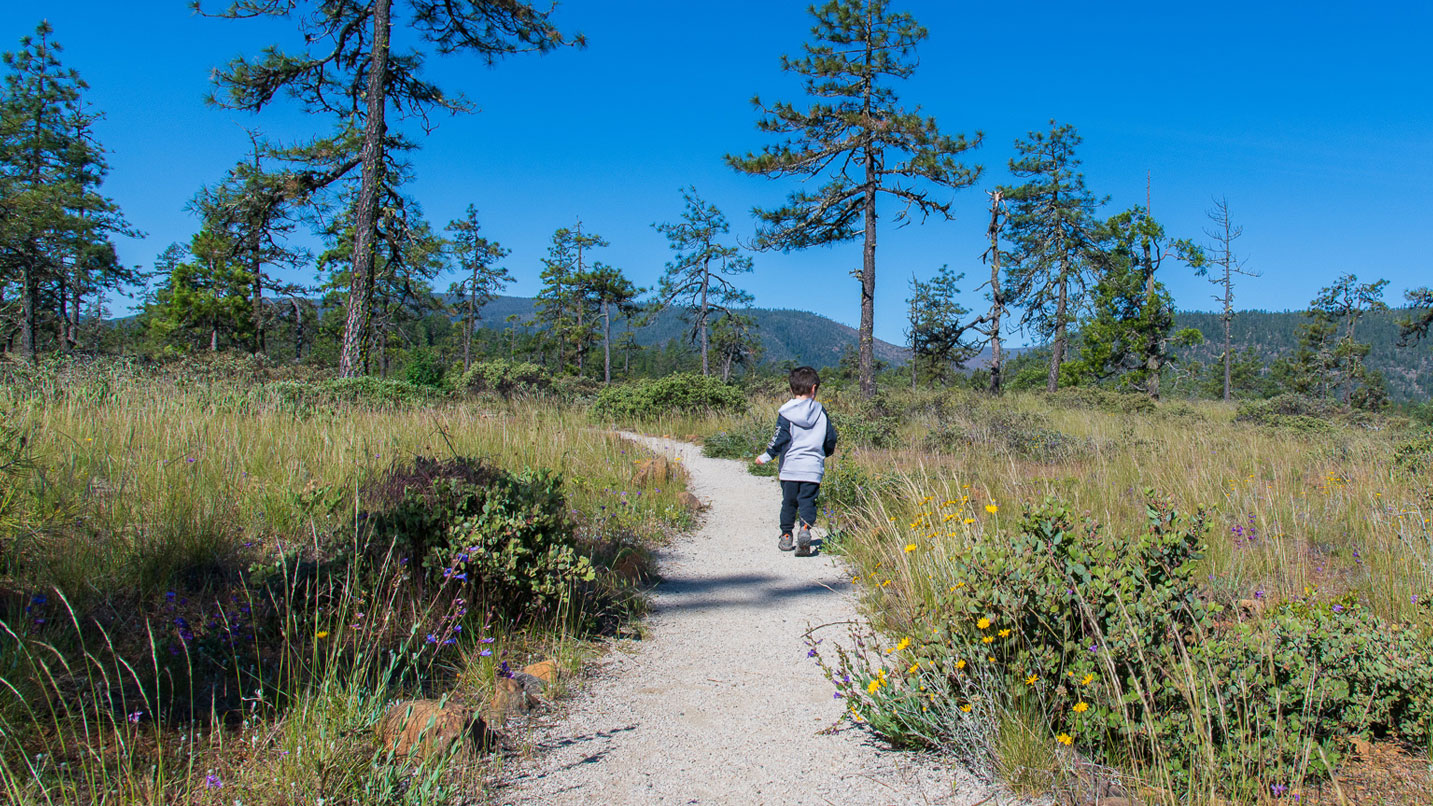
Unique Geology and Climate Means Amazing Blooms
Part of the larger Klamath-Siskiyou ecoregion, the valley is uniquely situated geographically, positioned between the Coast Range, the Great Basin and the Cascade mountains. To add to the intrigue, you’ll find the ground lined with beds of unusual serpentine rock in reds, yellows, blues and greens.
The valley’s climate is also relatively unique, with milder, rainier weather. “These conditions combined give the Illinois Valley the unique capability of hosting one of the highest concentrations of rare plants in Oregon,” says Corcoran.
Where to See Rare Wildflowers and Landscapes
If you are a botany nerd like me, you’ll find many trails that show off the valley’s charms. A visit to the area anywhere from April to July will yield many botanical delights.
Just off the Redwood Highway (U.S. Route 199), it’s easy to access the rocky savannah of Rough and Ready Botanical Wayside. Look for the 1.2-mile wheelchair-friendly packed gravel trail that leaves from the parking lot. Walk through a cobble-strewn savanna of stunted Jeffrey pine with forested peaks in the distance. Blushes of color hug the ground below manzanita and other shrubs that grow on this sparse, rocky landscape. Kneel down to inspect a flower or sniff a pine tree — they smell like vanilla.
Look for the endemic Hall’s violet, with its purple hood and yellow-whiskered face, and the bright-lavender Douglas monkeyflower, with its yellow and dark purple-striped center, among the many hundreds of species found here. According to Snodgrass, the best time to visit is May, but you will find flowers in bloom from April to June.
Just an eighth of a mile long, the Eight Dollar Mountain Boardwalk snakes its way down to a darlingtonia fen where bright-green California pitcher plants capture insects through openings at the base of their bulbous cobra-shaped leaves. Interpretive signs along the way help visitors with identification of many of the plants found here. Visit in May for the best chance to see pitcher plants in bloom, as well as many other fen-loving species like western azaleas.
To experience a greater diversity of habitats and get up close to the wildflowers in the area, take the 3.8-mile Jeffrey Pine Loop to Little Falls Loop. It ventures through Jeffery pine forest, purple camas lily wetlands and colorful rock gardens. The loop begins just opposite the road to the boardwalk.
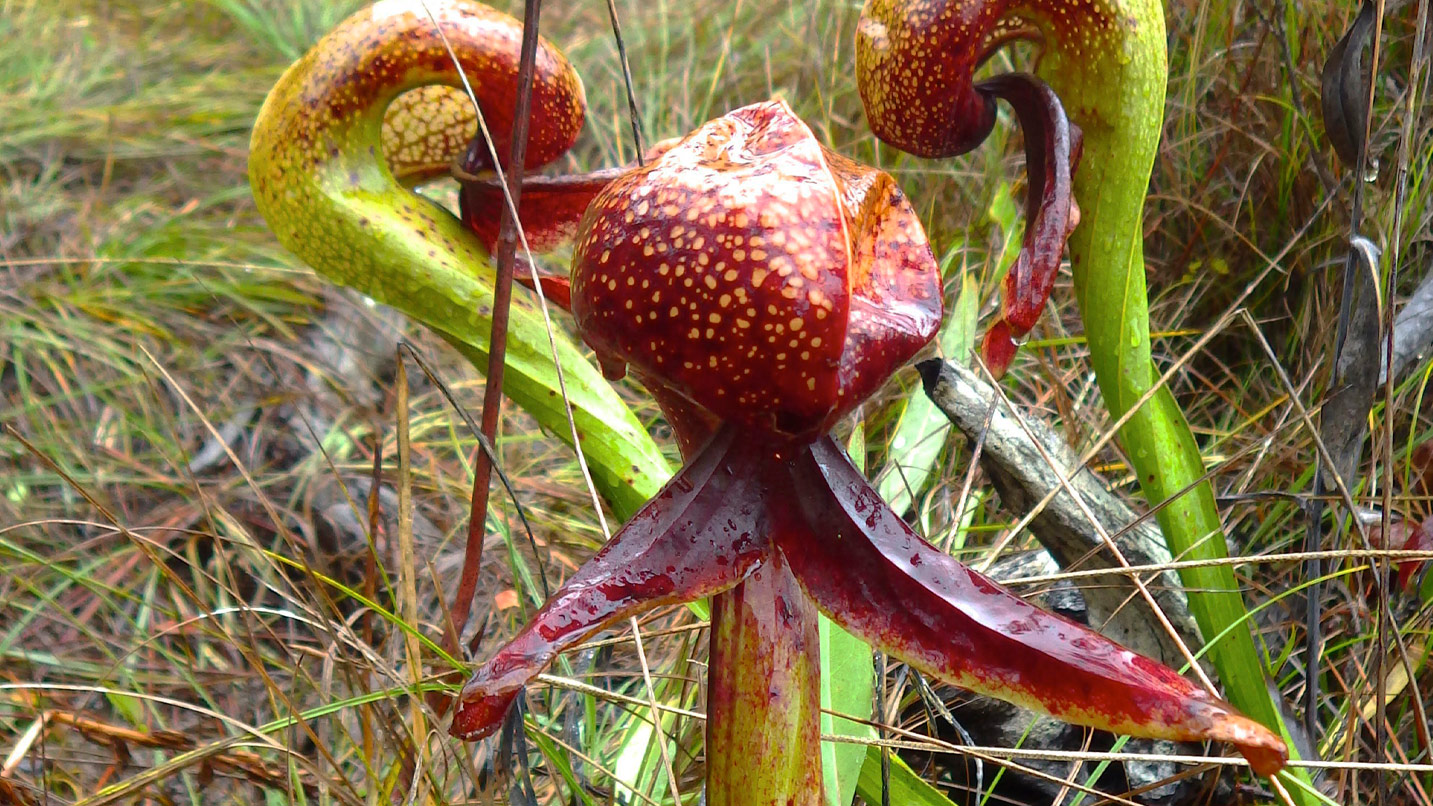
Road Trip Down a Botanical Drive for a Quick Hike
Want to take it all in as a road trip? The Eight Dollar Mountain Botanical Wayside is near the start of the 7.5-mile T.J. Howell Botanical Drive, where you can enjoy a variety of viewpoints, pullouts and stellar hiking trails. Visit anytime from April to July to see what has encouraged so many high-profile botanists since the 1880s, including T.J. Howell himself, to study the flats.
On the drive, you’ll find pullouts that link to two botanically interesting areas. The Kerby Flat Trail begins at a small marked pullout and takes you on a steep descent into the Illinois River Canyon. From there you can follow Deer Creek up Forest Service Road 4103-011 to Star Flat, then up to another unmarked pullout for roughly 4 miles of hiking.
Hike along rocky rimrock where stunted pines grow in bunches before climbing down to a shady riparian corridor of pine, incense cedar, madrone and waxy-leafed Oregon myrtle. Pass by green-colored rocky outcrops that glimmer in the sun and marshy wetlands. Look for serpentine flora like Bolander’s lily, wild gentian and California lady’s slipper, as well as pitcher plants that inhabit many large fens along Deer Creek.
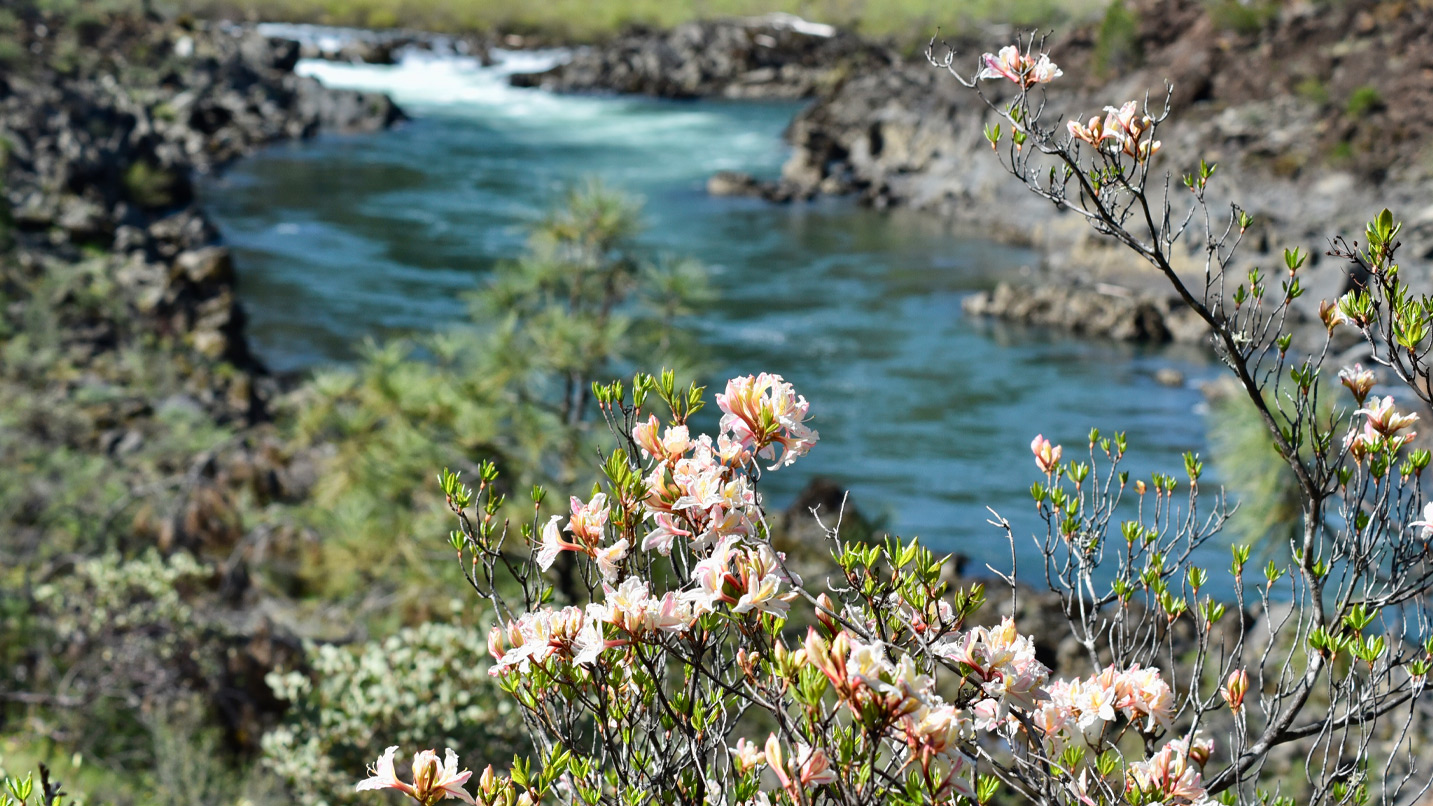
River Canyon Views and an Interpretive Walk Through Diverse Ecosystems
The Illinois River Trail can be accessed from the East Trailhead via the rough Illinois River Road just outside of Selma or from the West Trailhead via Oak Flat Road near Agness. Late May through July are best for viewing wildflowers and enjoying this 28-mile remote river trail.
Hike along the upper slopes of the Illinois River canyon for dramatic views of the river’s aquamarine waters. The area has been affected by many wildfires, but this has not taken away from the area’s beauty. Ghostly blackened trunks rise up from shrubby undergrowth, and fragrant wildflowers proliferate. Low-elevation areas offer the opportunity to see some of Corcoran’s personal favorite flowers, including the clover-shaped redwood sorrel; trillium; the umbrella plant, with its clusters of pink flowers; and the cheerful, yellow small-leaf monkeyflower.
For a short, invigorating hike about 15 miles west of Grants Pass, try the Limpy Botanical Interpretive Loop. You’ll pass through mixed and riparian forests and through boggy serpentine environments on this less-traveled 1-mile loop. In addition to a diversity of habitat and species, the trail has a waterfall, plus benches and several interpretive signs that introduce visitors to each environment. Enjoy ethereal Henderson’s fawn lily blooming in abundance in April, along with rocket-shaped Henderson’s shooting star.
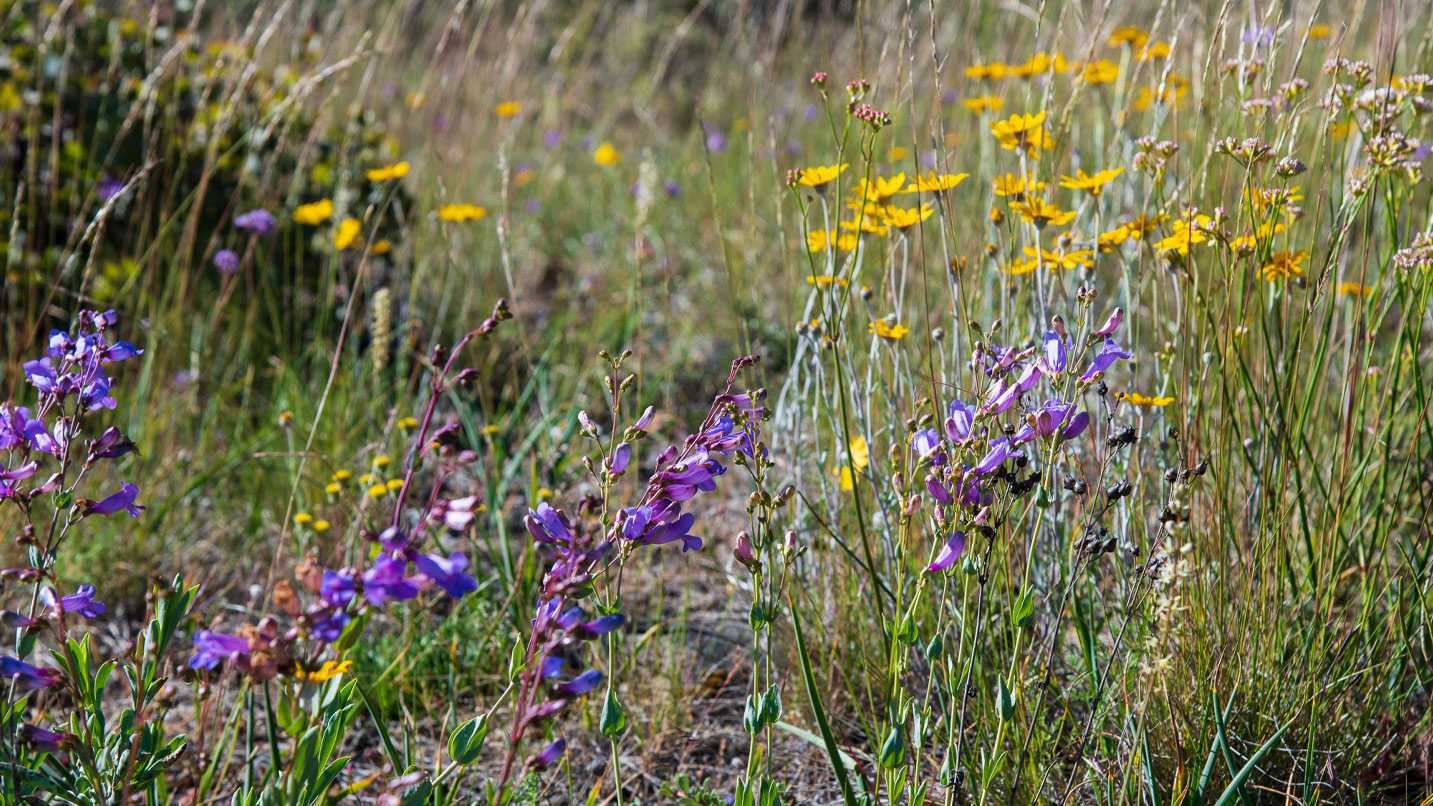
Tips for Enjoying the Illinois River Valley Responsibly
There are many ways to enjoy the beauty of the valley and its diverse and unique flora. It’s essential to practice Leave No Trace principles, helping to maintain the valley’s integrity and ability to persist. Snodgrass and Corcoran offer a few more helpful tips.
- Approach your visit with patience and curiosity. Admire the way the sky, mountains and river valleys stitch together in a rugged and wild ecosystem, suggests Snodgrass.
- Avoid picking any flowers that you come across. Corcoran cautions that they might be rare or you might inadvertently spread weeds through contact.
- Visit often and marvel in this unique place. “One could spend a lifetime exploring it and not learn all of its secrets,” says Snodgrass.
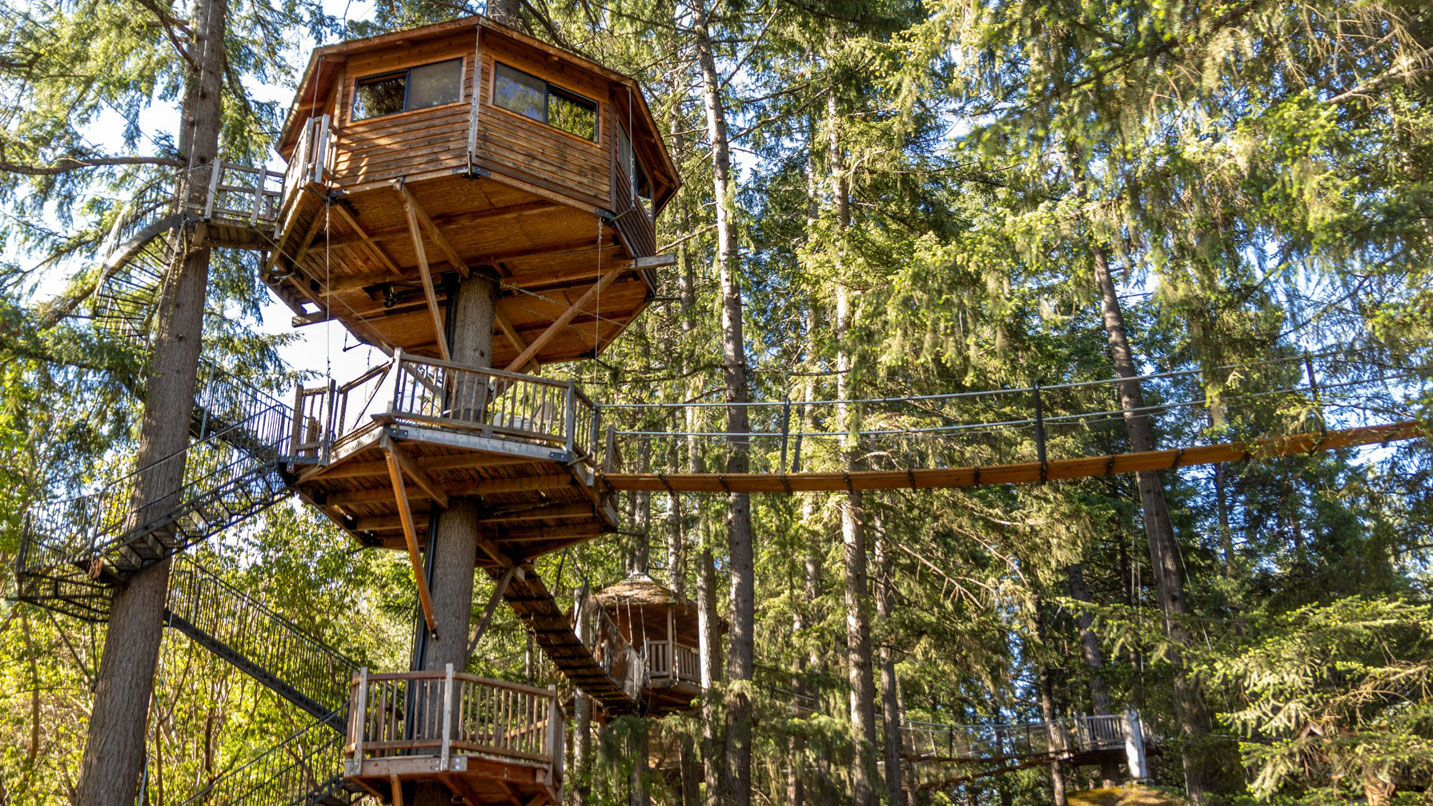
Eat, Stay and Play in the Area
To stop for a bite to eat in nearby Cave Junction, residents recommend the wide array of sausages and other picnic supplies — as well as sandwiches and hot meals — at Taylor’s Sausage Country Store. If you’re in need of a quick pick-me-up, check out Coffee Heaven.
For easy access to wildflower sites and trails, stay at Lake Selmac County Park, just outside of Selma, or at one of the small walk-up camps along the Illinois River Road in the Rogue River-Siskiyou National Forest. You might also spend the night in a tree at Out N About Treehouses near Takelma, which also offers zip lining and horseback riding.
If you visit between late May and when the rains come in fall, you might also choose to camp at Cave Creek Campground in nearby Oregon Caves National Monument, another rare ecosystem in Southern Oregon with trails and guided cave tours. Since the ranger-led tours are limited, be sure to reserve your spot well ahead of time.
